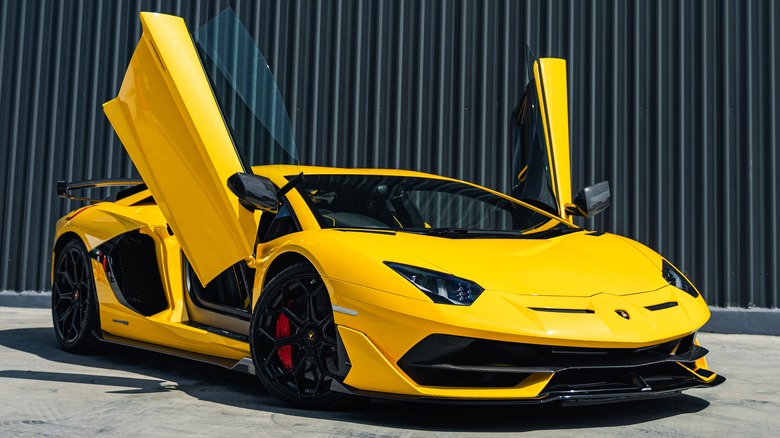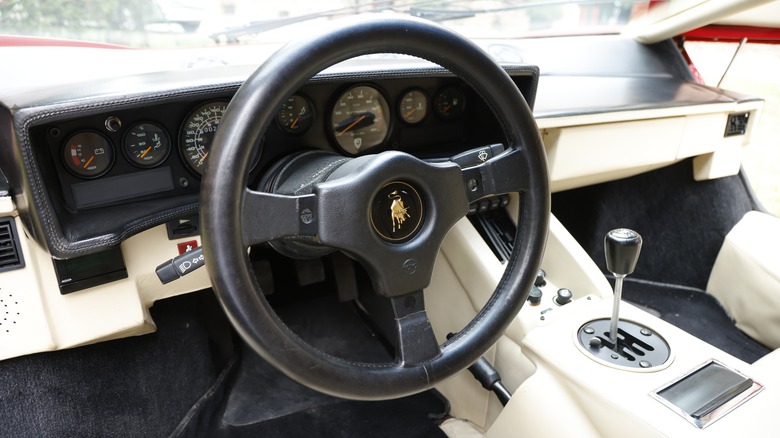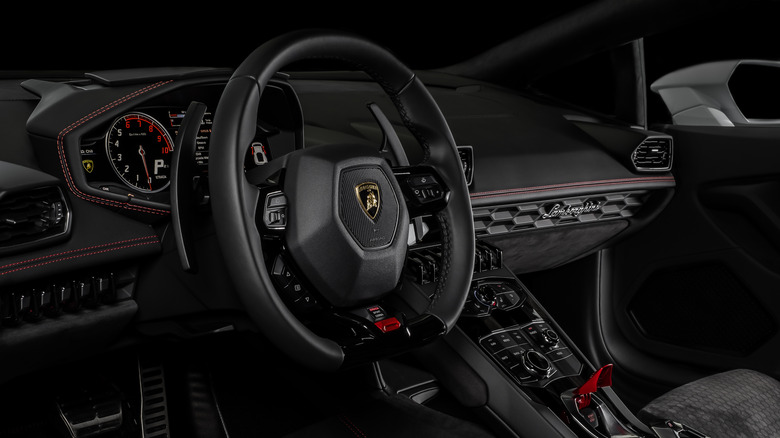The Reason Why Lamborghini Will Never Build A Manual Transmission Car Again
The general perception of muscle car enthusiasts is that they prefer manual transmission over automatic because of the sensory stimulation one gets from switching gears. A manual gearbox also gives drivers better precision and control over how they mingle with their vehicle's acceleration. However, the Italian supercar maker Lamborghini is staying clear of roadsters with stick shifts and no longer offering buyers the option to order one. As a result, older Lamborghinis that feature manual transmissions may one day be treated as limited edition models. This change is not limited to Lamborghini. Another Italian sportscar maker, Ferrari, has long given up on manual transmissions, and the last model to feature one was the Ferrari California, though only two units were ever built by the company (via AutoEvolution).
The Gallardo was the last Lamborghini to feature a manual transmission option. The Italian carmaker launched the Aventador without the option for a manual gearbox, and starting with the launch of the Huracán in 2014, it opted to focus solely on vehicles with automatic transmissions. However, the decision, it seems, was made much earlier. In 2011, Maurizio Reggiani, Lamborghini's director of R&D at the time and then the chief technology officer at the company, indicated that cars with a manual transmission had no future in the company's lineup, as reported by MotorTrend more than a decade ago. What prompted this change?
There's zero demand for manual Lamborghinis
By January 2014, very few Gallardos were ordered with a manual gearbox — so few, in fact, that AutoGuide quoted company CEO Stephan Winkelmann as saying that the automaker's team would have to double-check with the dealership from which the order was received to make sure the manual transmission request wasn't an error.
Besides the lack of demand for cars with a manual transmission, Lamborghini's advanced driving tech starting with the Huracán also warranted complete control over the vehicle, and the manual use of a clutch could potentially cause disharmony. In 2016, Reggiani said in an interview with Road & Track that engaging the clutch "creates a hole in the communication between what the engine is able to provide and how the car reacts to the power of the engine."
The executive also said during the interview that even though the decision to drop the manual transmission option wasn't easy, the automatic chassis control systems on newer Lambos meant there wasn't really any other option. "If you want to control the power, the clutch must be under the control of the brain of the car, not your brain," Reggiani said.
Smart features and an electric future influenced the change
Huracán and newer Lamborghini cars primarily come with multiple driving modes, including Strada, Sport, and Corsa. Each one adjusts various parameters of the vehicle, including the steering response, the stiffness of the shock absorbers, and the acceleration. The automatic gearbox makes it significantly more accessible for the complex systems to manage these attributes in tune with the car's overall performance. Giving drivers manual control can cause interference in — and therefore, impede — the timely shifting of gears. For people who still want to control gears at their will, Lamborghinis, like most other sports cars, come with paddle shifters behind the steering wheel.
Because of these differences in how the onboard computer handles gear shifts, it would be imperative for Lamborghini to design the powertrain with manual transmission from scratch. Besides the performance, this decision also impacts how the car responds to safety and handling requirements. Given the paltry number of orders Lamborghini's manual transmission models attracted towards the end of their era, it would be a costly and unprofitable investment for the company.
Another factor contributing to this move is the potential migration to an electric drivetrain in the future. The company plans to hybridize all models starting in 2023 and introduce an all-electric model by the end of this decade. This will make it vital for the company to concentrate its efforts on an automatic and electronic gearbox.


